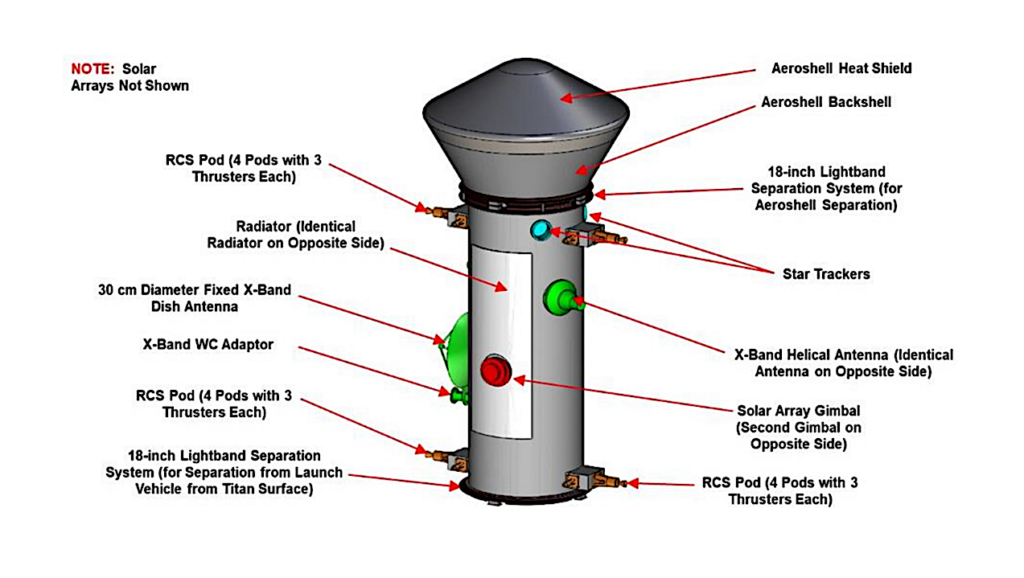Antifreeze on Titan Could Affect Its Chances for Life

Antifreeze normally helps prevent freezing, but scientists find a common antifreeze compound that might exist on Saturn’s largest moon Titan can get trapped within ice-like cages.
This discovery could influence what researchers think is possible about the evolution and development of life on Titan and other icy celestial bodies.
Titan, which is bigger than Mercury, is the only celestial body aside from Earth known to have liquid on its surface. These seas, made of liquid methane instead of water, have often led to speculation over whether or not they could support life.
Besides possessing seas on its surface, investigators recently discovered hints that Titan has a watery internal ocean as well. For this ocean to stay liquid, scientists have suggested it may possess antifreeze molecules that stifle the formation of ice when temperatures drop below the normal freezing point of water. Hidden watery oceans are also thought to exist in other icy moons, such as Jupiter’s satellites Ganymede, Callisto and Europa. Such watery oceans raise the possibility that life as we know it might dwell under icy shells, because life exists virtually everywhere there is liquid water on Earth.
One possible antifreeze compound on Titan might be ammonia, which is commonly used in fertilizer and household cleaners. Another might be methanol, the simplest kind of alcohol molecule — a colorless, flammable, poisonous chemical also known as wood alcohol that can blind or kill when drunk. Estimates suggest an underground watery ocean at least 55 miles (90 kilometers) thick could survive on Titan provided it was about 4 percent methanol and 1 percent ammonia.
Even though ammonia can serve as an antifreeze, past studies from physical chemist John Ripmeester at the National Research Council of Canada in Ottawa and his colleagues found it nevertheless could get trapped within ice-like lattices known as clathrate hydrates. However, roughly 70 years of research suggested there was little or no direct evidence that clathrates might cage methanol. As such, methanol is often used by industry to prevent clathrate hydrates from developing within oil and gas pipelines.
“Common knowledge said that methanol, since it behaves like antifreeze, shouldn’t enter hydrate cavities,” Ripmeester said.
Now Ripmeester and his collaborators find methanol can indeed get entrapped within clathrate hydrates after all.
“Methanol, a material best known as an antifreeze and used to prevent hydrate formation in industry, actually is a promoter of hydrate formation at low temperatures,” Ripmeester said.
The scientists first tinkered with clathrates not made of water ice, but rather clathrates made of organic compounds such as tetrahydrofuran hydrate. At temperatures near 32 degrees F (zero degrees C), the normal freezing point of water, X-ray diffraction and nuclear magnetic resonance (NMR) spectroscopy revealed methanol could get incorporated within these clathrate hydrate lattices.
The researchers found that solutions comprised solely of water and methanol could not get frozen to form clathrate hydrates. However, experiments and molecular dynamics simulations revealed that solutions containing water, methanol and methane could form these ice-like cages.
Surprisingly, Ripmeester and his colleagues found that at low temperatures, methanol could actually encourage the formation of solid clathrate hydrates instead of suppressing it. These findings raise questions whether and how methanol is employed to help prevent clathrate formation in pipelines in the future, especially in polar climates and the deep ocean.
By promoting the formation of methane clathrate hydrates on icy celestial bodies, methanol could also explain the relatively high concentrations of methane and other hydrocarbons seen on the surface of Saturn’s moon Enceladus, despite predictions that most such hydrocarbons should have escaped from its atmosphere long ago. As temperatures fluctuate, methanol-loaded clathrate hydrates on those bodies could break down, giving off methanol, Ripmeester said.
“This new knowledge definitely will affect the development of new models for icy planets,” Ripmeester said.
One compelling feature of this discovery regarding the possibility of life on alien worlds is how clathrate hydrates could bring together key ingredients of life close together, such as water, ammonia and methanol. The closeness of these various molecules presents a favorable environment for producing more complex organic compounds, Ripmeester said. These molecules could ultimately serve as the basis for life.
The scientists detailed their findings May 21 in the journal Proceedings of the National Academy of Sciences.








